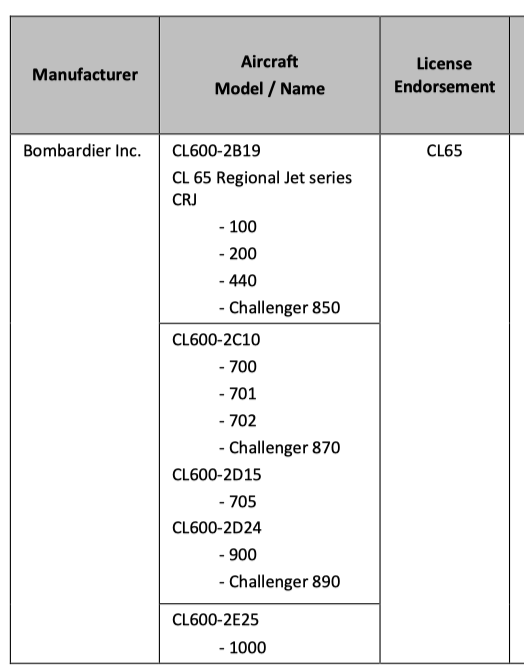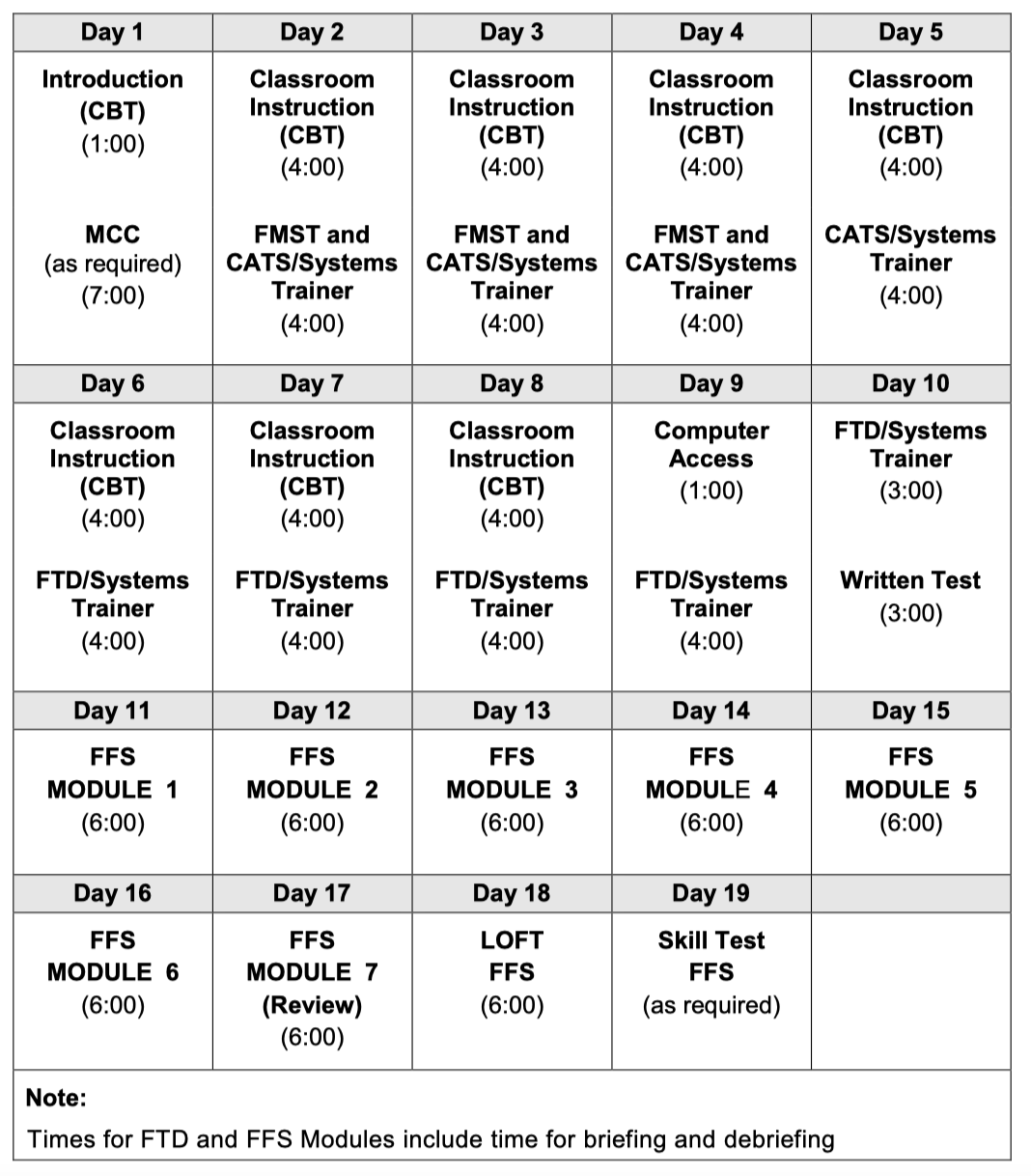Typerating Bombardier CRJ
Flight training for issue or renewal of Bombardier CRJ type rating is generally described in Ec 1178/2011, Part FCL. The type rating training is described further in EASA Operational Suitability Data for CRJ Series. The document describes furthermore the duration and conditions for issue of CL65 type rating.
We cooperate with various flight schools based on the CL65 variant used for the type rating training. All type rating trainings are provided in accordance with EASA standards.
Following variants constituting into the single licence endorsement of Bombardier CL65:

Bombardier CRJ type rating duration
Duration of the flight training and simulator training of Bombardier CL65 type rating training depends on the CRJ variant used. In general, the duration of initial CL65 type rating training is as follows
- System trainer: 12 hours
- FSTD2: 15 hours
- FFS LEVELD: 32 hours
Following schedule applies for the Bombardier CRJ1000 initial type rating training:

Training areas of special emphasis
EASA Operational suitability data CRJ Series describes further the training areas of special emphasis for initial CRJ type rating training:
System integration
- Primary Flight Displays (PFDs) a Multifunction Displays (MFDs)
- Flight Control Panel (FCP)
- Flight Mode Annunciator (FMA)
- Full Authority Digital Engine Control (FADEC)
- Engine Indication and Crew Alerting System (EICAS)
- Flight Management System (FMS) (an expanded training footprint should be considered for pilots without previous FMS experience)
- Coupled and non-coupled V-Nav
Flight Training - full flight simulator
- Aileron PCU Runaway
- Dual Hydraulic System Malfunctions (System 3 and 2 or 1)
- Air Driven Generator (ADG)
- Deployment Dutch Roll (with and without both yaw dampers operative) - High Altitude / Slow Speed 10,000 feet / Landing Configuration
- ILS Approach on Standby Instruments
- Landing with Ground Lift Dumpers (GLD) not deployed
- Take-off and Landing rotation / de-rotation
- Aircraft performance in low energy go-around situations
- Circling approach and manoeuvring at night
- Flight control system (modes of operation, control-by-wire rudder system)
Emergency and safety training
- recovery from unusual attitudes;
- handling qualities and procedures during recovery from an upset condition
- high altitude high and slow speed buffet margins and flight characteristics;
- Controlled Flight Into Terrain (CFIT), TCAS, EGPWS);
- wind shear and predictive wind shear escape manoeuvres;
- operation of aircraft in icing environments including super cooled liquid droplet (SLD) events (depending on FFS software);
- manual flight with minimum use of automation (e.g. raw data, without FD).

--
Look for a reliable CRJ Series typerating training provider. ProfiPilot Training is the professional flight school of your choice.

